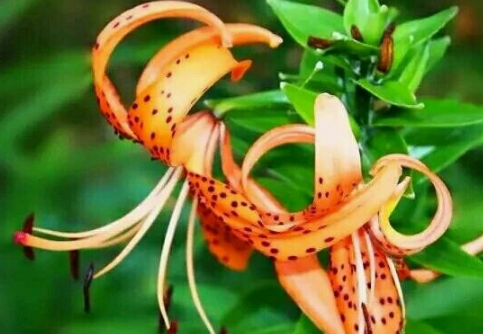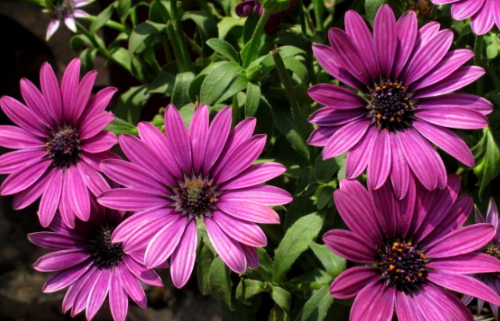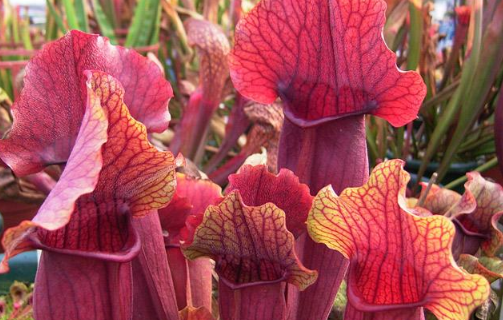Disease prevention and control of lilac
1. Penicilliosis
Symptoms: during storage, white spots grow on rotting scales and fluffy green-blue patches grow. Finally, the pathogen invaded the basal disc of the bulb and slowed down the growth of the plant.
Prevention and control methods: do not plant bulbs invaded by bacteria. Before planting, susceptible bulbs should be soaked in 1/1000 fungicide solution for half an hour, and then colonized.

two。 Phytophthora
Symptoms: rot occurs at the base of the stem, showing dark green, gradually expanding upward, the leaves turn yellow, and the base of the stem loses color. The stem on the ground is also often infected, causing the stem to bend.
Control methods: first of all, disinfect the soil, use fungicides to inhibit Pythium during cultivation, the plant can not be too wet for a long time, and reduce the soil temperature as much as possible in summer.
The breeding method of Curly Dan is introduced to you so much. I hope it can be helpful to you. Friends who like Codonopsis lanceolata should try to raise a few plants.
The disease of lilac and its control
Symptoms of penicilliosis
During storage, white spots grow on rotting scales, followed by fluffy green-blue patches. After being infected, the rot will further increase at the low temperature of-2 ℃. Eventually, the bacteria will invade the basal plate of the bulb, and the bacteria will slow down the growth of the plant. Although the bulb looks unhealthy, as long as the basal plate is intact, the growth of the plant will not be affected. After planting, the infection will neither transfer to the stem nor infect the plant from the soil.
Prevention and cure method
Do not plant bulbs whose bases are damaged. Store the bulbs at the recommended minimum temperature. The susceptible bulbs must be soaked in 1/1000 fungicide solution for 30 minutes before planting, and then colonized. Maintain a suitable soil temperature after planting.
Symptoms of Phytophthora infestans
The foot rot of the plant will hinder the growth of Solanum lanceolata, and in serious cases, it will cause it to wither. Soft rot occurs at the infected base of the stem, becoming dark green to dark brown, and expanding upward, the leaves turn yellow and lose color at the base of the stem. Similar soft rot infection often occurs on the stem on the ground, causing the stem to bend or collapse.
Prevention and cure method
Disinfect the soil with soil disinfectants; use fungicides to inhibit Pythium during cultivation; ensure good soil drainage conditions; prevent crops from being moist all the time: the soil temperature should be as low as possible in summer.
Symptoms of dry shrinkage of Guandan Luolei
Buds fall when the buds grow to 1 to 2 centimeters. The color of the bud turns light green, the pedicel connected to the stem shortens, and then the bud falls off. The low buds are affected first in spring, while the high buds fall off first in autumn.
Prevention and cure method
Do not plant varieties that are easy to shed buds in areas where there is not enough light. The bulb should not be dried during cultivation to prevent buds from shrinking. Ensure that the root system of the bulb is good, and provide a suitable environment as much as possible, with particular attention to light and transpiration.
Disease control of Hemerocallis fulva Hemerocallis (scientific name: Hemerocallis) is a perennial perennial root herb. With short rhizomes and stout fusiform fleshy roots. There are many aliases for Hemerocallis, such as "Golden Needle", "cauliflower", "forget worry Grass", "suitable male Grass", "Healing sorrow", "Deer Arrow" and so on. Hemerocallis is called "Tiger Lily" in English. When eating, it is often called "golden needle". Its leaf shape is flat and long linear, and the underground stem has a small amount of poison, so it can not be eaten directly. The shape of the flower is to grow slender green flowering branches at the flowering stage, with orange flowers, long stalks and tube-like lilies. The fruit has wings. It is commonly cultivated all over the country, and there are wild ones in the provinces and regions south of Qinling Mountains.
Disease control of day lily leaf blight and rust are two diseases that are easy to occur in hemerocallis hemerocallis. Disease control should be based on strengthening cultivation and management, timely removal of weeds, old leaves and withered scape, centralized destruction, in order to reduce the source of infection, and select disease-resistant varieties. At the initial stage of the disease, 50% mancozeb 500 × 800 times solution could effectively control the occurrence of leaf blight; at the initial stage of the onset of rust, 15% vermicellin wettable powder 1000-1200 times was sprayed once every 10-15 days to effectively control the occurrence of the disease.
- Prev

Prevention and control of diseases and insect pests of blue chrysanthemum
Because blue chrysanthemum is relatively easy to feed, vitality is also very tenacious, so it rarely gets sick, and there are not many diseases and insect pests, generally common pests are aphids, once there is such a pest, it should be solved immediately
- Next

Common diseases of bottle grass and their solutions
The cause of root rot disease is that the root system of bottle grass is relatively developed, which is usually matched with water moss. If the permeability of the basin is poor, shallow or watered too frequently, it is easy to cause stagnant water in the basin and cause root rot disease. The solution: the flowerpot should be a deep pot, at least 10 centimeters or more, and there should be a hole in the bottom of the pot. It is not necessary to cover the pot with water moss.
Related
- Fuxing push coffee new agricultural production and marketing class: lack of small-scale processing plants
- Jujube rice field leisure farm deep ploughing Yilan for five years to create a space for organic food and play
- Nongyu Farm-A trial of organic papaya for brave women with advanced technology
- Four points for attention in the prevention and control of diseases and insect pests of edible fungi
- How to add nutrient solution to Edible Fungi
- Is there any good way to control edible fungus mites?
- Open Inoculation Technology of Edible Fungi
- Is there any clever way to use fertilizer for edible fungus in winter?
- What agents are used to kill the pathogens of edible fungi in the mushroom shed?
- Rapid drying of Edible Fungi

